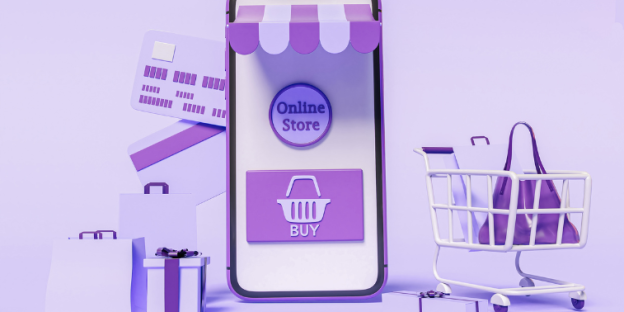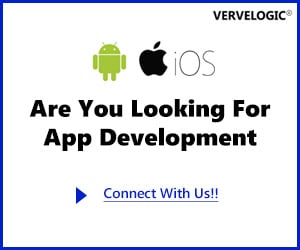A Complete Guide to API Development

If your business is connected with the tech industry or you work in it then you must be aware of the word called API. API is the buzzword at the moment in the mobile app development industry as it is playing a very big role in making our lives easier. APIs can be seen anywhere as we use them daily, the most common example of APIs in our everyday lives is Weather snippets.
One common API usage example we come across daily is weather data. They collect data from all around the world using an API it sends them the latest weather details in a way that’s easy to reformat.
Want to know, how to Develop Weather Forecast & Alert Mobile App?
Another top example of API in our daily lives is PayPal. If you have ever used PayPal to pay for something, directly within any online store then it’s an API at work.
Because of its increasing popularity day by day, more and more techies are searching for how to develop API for apps. The mountain of API is surely one big thing to explore but that’s exactly what we are going to do in this article. So, without further ado let us discuss everything about APIs.
What is API?
API which stands for Application Programming Interface can be defined as a set of instructions that are required to enable an app to utilize features or services of some other application, device, or platform to offer better services or make the user interface better for the users.
API(Application Programming Interfaces) consists of two major components:
The API has throwback new standards for businesses and customers. While using a website we can easily switch to any other website just with the API. There is no need to fill in the login details. The details are quickly fetched from the backend dataset, with the permission of the user. Once the user is done with permission, he just enjoys the portal surfing, without any hassle.
With the role of API, it makes easier two-way communication. Till now we have understood what API is, and now we moved to know its components.
So let’s start.
=> First, technical specification describing the data exchange options between solutions with the specification done in the form of a request for processing and data delivery protocols.
=> Second, the software interface is written to the specification that represents it.
The software development needs to access information or any functionality from another software or app calls its API while specifically telling it about its requirements of how data/functionality must be provided. The other software or app returns data/functionality requested by the former application.
APIs are not going anywhere and with time they will be really helpful for app development and web development. So, we bring you a detailed blog on a complete guide for API development.
Each API can be put into effect by function calls which are that language statements that are used to request software and ask them to perform a particular service or action. You can learn more about the Function calls in the API documentation.
APIs offer many benefits including speeding up software development. That is why mobile app developers look for a complete guide to API development and use them to add functionality created by providers or used in existing solutions. Moreover, APIs can also be used to develop new applications by using third-party providers.
Types of API
API is not all equal, however. App development agencies can work with an assortment of API types, protocols, and architectures whichever suits their unique needs of different apps and software. There are four different types of APIs: Public, Private, Partner, and Composite APIs. Each one of them serves a different purpose. Let us understand more about them in detail.
1. Public APIs –
Public APIs are also known as external or developer-facing as these APIs are also available for third-party developers. The main purpose of public APIs is to increase brand awareness and allow more and more mobile app developers to use them which can also allow you to receive extra income if executed properly.
Public APIs can also be classified into two categories – Open public API and Commercial API. The open API consists of features that are completelymobi public and can be used without any restrictive terms and conditions which means everyone can use it without any hassle. These are available for free to test or create new applications.
On the other hand, commercial APIs either ask for subscription fees or allow the use of API on a pay-as-you-go basis. Publishers might also offer free trials so the mobile app development company can evaluate APIs before they purchase the subscription to use them.
2. Private APIs –
Private APIs are usually created to improve the services and solutions within the organization. It allows the contractors or the in-house developers to use these APIs to build new systems. It means private APIs are only available for those developers who are currently working with API publishers even if the mobile app is publicly available. With a private API strategy, the company can take full control of API usage.
3. Partner APIs –
As the name implies, Partner APIs are used for software integration between two parties. Such APIs can be easily promoted and also shared with partners who have already signed the agreement with the publisher.
It will allow the company that has created this API to earn from other revenue streams by offering it to other partners as they are allowed to benefit from these and can have access to data. But it allows the parent API company to monitor the following things:
-> How exposed digital assets are used.
-> Ensure that the 3rd party solutions which use their APIs offer a decent user experience or not.
-> If the partner is maintaining corporate identity in their apps while using their API.
4. Composites APIs –
Composite APIs typically combine two or more APIs to craft a sequence of related or interdependent operations. If you want to address any complex or tightly related API behaviors the composite APIs can be beneficial to use in your operations. Composites also help in improving speed and performance over individual APIs.
Node.js is a platform built on Chrome’s JavaScript runtime for easily building fast and scalable network applications. Node. js uses an event-driven, non-blocking I/O model that makes it lightweight and efficient, perfect for data-intensive real-time applications that run across distributed devices. So, to make it easier for you, here we have the top 12 Best Nodejs frameworks for web app development.
How Does It Work?
To understand the working for an API let us take an example as it can make things easy for us. So, you went to a restaurant and imagined a waiter there. You are sitting at the chair and pondering over the menu to order from. The kitchen is the provider who will fulfill your order. Now you will need a bridge or a link to communicate your order to the kitchen and then get it back and deliver your food to your table.
The chef can’t be that link as he/she is preparing your order. So, the restaurant owner needs something to connect the customer and the kitchen so the chef can prepare your food. That’s where that waiter or we can say API enters the picture.
The waiter takes your order and delivers it to the kitchen. It then delivers the food from the kitchen to your table or delivers the response back to you. If the API is designed correctly like it knows where the data from one point to another point goes then your order won’t crash.
The API acts as an intermediate which basically streamlines the data sharing process. On the other hand, you at the restaurant and the kitchen work as the endpoints. When it comes to communicating the endpoints.
API mainly works in two ways which are SOAP and REST. Now that we have learned how APIs work, let us have a look at the basic terminologies used in API development.
Terminologies associated with API Development
If you are looking for custom API development as an app development agency then you must know the below terminologies.
1. API Key –
The API key is a unique code that is passed in the computer programs for authenticating the user, developer, or calling program.
2. Endpoint –
As mentioned endpoint means interaction touchpoints between server and API are called endpoint. Just like the above example of a restaurant where you and the kitchen are touchpoints.
3. JSON –
JSON stands for JavaScript Object Notion which is a kind of data format and is used for APIs to interchange the data. This kind of interchange of data can easily happen between a web application and a server or two applications.
4. GET –
GET is known as the method which is used for requesting data from the server at a designated resource.
5. POST –
POST is a method that can be used for sending data to the API server to create or even update a particular resource.
6. OAuth –
It’s an open standard authorization framework for APIs. The main function of OAuth is to offer secure and restricted access to the end-users data which is to be used by the application and even from third-party websites without accessing any password.
7. Latency –
As the name implies, the time taken by the API to process a request and response is called latency.
8. Rate Limiting –
Rate limiting can be defined as the process of controlling the rate of incoming as well as outgoing traffic. It can also be defined as the total number of requests that a user hits to the API.
9. API Throttling –
It is the process in which the usage of APIs by consumers is controlled for a specific duration.
Tools for API Development
There are many tools in the market when it comes to API development. So, we have compiled a list of the best tools and products that mobile app developers use for API development so it becomes easy for you.
1. Apigee –
This API development tool is offered by Google and is perfect for businesses when they are updating their legacy apps or facilitating data transfer between apps and services. Apigee can also be useful if you are building connected apps and that is why app development companies prefer it for API development.
2. Dredd –
Dress is basically an HTTP API testing framework as it is used to validate the description of an API in the backend. It helps you learn more about Dredd by going through API’s description thoroughly and also finds out if the API is validated or not.
3. APIMatic –
APIMatic is dedicated to website API development. The mobile app development company can use it to create SDKs for their APIs for 10 platforms as it can also be used to keep it in sync with the API updates.
The best part of APIMatic is that it allows developers to convert API descriptions into multiple formats such as WADL, Swagger, RAML, OAI format, IO Docs, API Blueprint, Postman Collections, HARR 1.4, etc.
4. Sandbox –
Using Sandbox, you can easily create a mock RESTful API from API definitions. It is also known for its feature that reduces the risk and cost associated with third-party API calling during testing.
5. Postman –
If the App development agency wants to estimate the performance of the API by documenting and testing it then Postman can help you with it. It can also be used as an interactive tool that can be set up for automation.
6. SoapUI –
SoapUI (simple object access protocol) is another testing tool that can operate on cross-platforms. The best part of Soap UI is that it can automate both functional and non-functional tests as it can be used for various methods like regression. executing, compliance, executing, security, and load tests for the Web APIs.
7. Swagger –
Swagger works as an open-source framework that is used for API development. Many top names in the market like above mentioned Apigee, GettyImages, PayPal, and Microsoft use Swagger.
8. JMeter –
It is open-source software that can be used in performance testing of RESTful API.
Must-Have Features in API Design
There have been many features that you must include in your API development process.
1. Authorization and Authentication –
Authentication means finding out whether something is in fact what it declares itself to be. And authorization means giving someone permission to do or we can say a verified user is permitted to perform an action on a specific source. OAuth, OAuth2, and JWT are some of the most commonly used specifications for managing authorization and authentication.
2. Pagination –
Pagination becomes important when your database starts growing with time. With a growing database, you will see that some of the resources are taking a longer time than usual to call.
So, you can make this process quicker by caching the objects or creating pagination. So it is basically the process to determine how much data should be displayed and at what frequency.
It also ensures that the user receives the right data as per the requirements, conditions applied, and modifications. It makes sure the processing time is minimized and ensures high-level security, and a good response time.
3. Cache –
With an effective cache strategy, you can retrieve resources at a lightning speed. So when the data is ready for consumption in an in-memory database, then it reduces the cost of your requests. There are many impressive tools like Redis and Memcached for developing a cache strategy.
4. Wrappers –
API wrappers can be defined as packages that are language-specific. Their main work is to combine various sets of API calls into user-friendly functions. These wrappers also call several other API calls without interacting with the user.
5. HATEOAS –
HATEOAS stands for Hypermedia as the Engine of Application State which is one of the modules of the REST app structure. It can consist of anything such as text, images, videos, etc, and is called hypermedia. You can interact with the REST API with the help of responses that are provided by the server dynamically.
Let’s understand more about REST. It is a representational state transfer API that contains a full set of constraints that is used for web app development.
6. Error Handling –
With top-level error handling you can make your debugging process easier as it can quickly identify any kind of server or client errors. There are many errors for which clients have to wait until it is fixed. Some of the helpful error-handling methods are as follows:
-> Finding out the right number of errors
– > Use error codes with well-known standards
– > Segregating domain and general errors
– > Describing the cause of the error
7. Validation –
Validation in the API means the verification of the correctness of data. It can be categorized into two types including server-side validation and client-side validation. In the client-side validation feedback is provided and in the server-side validation mundane tasks are provided like what kind of property it is.
8. Testing –
API testing is the same as any software testing as it includes testing the APIs directly along with the part of integration testing whether it meets the expectations for performance, security, reliability, etc. There are many testing tools as we have also mentioned like JMeter, Postman, and SoapUI.
Testing is very critical and one of the most important factors. On which most of the app implementation is based. Basically, the testing is of two forms, manual and automatic. Make sure for your API implementation practice, your team must be aware of both testing methods. If possible go for autonomous testing that quickly and deeply understands any errors without any fault.
For your reference, we have the best Functional and Automation Testing Tools. The testing process eliminates the code mishap. It is a process that needs lots of scrutiny and must evoke the developers for fast rectification.
Are you looking for website development and not sure which Web designing language to choose? You are in the right place. This article lists all the popular website designing languages that you must know.
Cost to Develop an API
Simply estimating the cost to build API from scratch that should be secured and functional without any lag, you must hire a reputed firm dedicated to building API. How Can You Find And Hire A Developer For A Startup? A Detailed Guide
API development is a crucial factor need to be aware of important practices. Roughly the cost depends on the nature or complexity of the app, development team, tech stack, resource pool, etc. on combating everything the cost to develop API will go around $20,000 to $30,000.
Top 5 Practices For Building an API
Until now we have seen so many features in the API along with the top tools needed to develop API for your mobile apps or web apps. However, you need best practices in order to build correct API building practices as there are a lot of API development practices.
Let us have a look at the top 5 practices for building API:
1. Throttling –
When it comes to redirecting the overflow of traffic, backup APIs, and safeguarding from DoS then app throttling is the best practice that you need to consider.
2. Enable Overriding HTTP Method –
There are many proxies, that only support POST and GET methods which we read earlier. That is why you must allow your RESTful API to override the HTTP method. You can easily perform this by employing the custom HTTP header X HTTP method override.
3. SDK and Libraries –
With some important resources, you can easily boost the speed of service development and implementation. We can easily perform this by offering the right resources that contain reusable processes and code.
4. Security –
The best app development agency ensures that the API is secure but also needs to make sure you have amazing user-friendliness. You can use token-based authentication to make your API secure.
5. Documentation –
Offering documentation is another superb practice that you must consider. You must create extensive documentation for an API that enables other mobile app developers to understand the entire process in detail so that they can utilize that information to provide a top-notch user experience.
Conclusion
APIs are the future and are not only helpful for software development but also for website development. Using effective APIs you can enhance your business profits by providing the required technological connectivity. With experience, you can also build and integrate the required API for your business.
VerveLogic can be your one-stop solution for mobile app development and web development because we have a team of experts and market experience. You can get your app or website developed at the best price possible. Also, if you are looking for branding solutions or online marketing for your brand then you should check out VerveBranding and Verve Online Marketing today and make your brand stand out. We hope we have solved your every query regarding the app icon and how to create an amazing app icon. Let us know in the comments and questions.






A collection of such detailed blogs to educate oneself. Good one by vervelogic.
Nice Article…! Thanks for sharing the complete informative guide on API development. API offer a better user interface.
Please visit the website which offers the Top App development services in USA and Across the Globe. We offer the best App development, Rpa, software development, AI ML, Digital Transformation, Data Science, Data Security, Cyber Security, Threat vulnerability assessment, UI UX, Cloud computing & consulting services
there is a collection of knowledge to create a good blog for readers.
I wasn’t sure I could manage such a lengthy article at the beginning. Your style caught my attention. Again, your content was exceptional. Great Article Neil. Though I had read the article a few days ago, I didn’t make a comment. However, I believed it was worthy of a”thank you. I will be using some of these suggestions on my own sites in the near future.
In the beginning I wasn’t sure I would be able to go through a post as long. Your style captivated my attention. Like always, you provided outstanding writing. Great Article Neil. It was excellent I went through it, but did not leave any feedback. However, I think this article was valuable enough to merit a thank you. I’ll apply some of these suggestions soon on my sites.